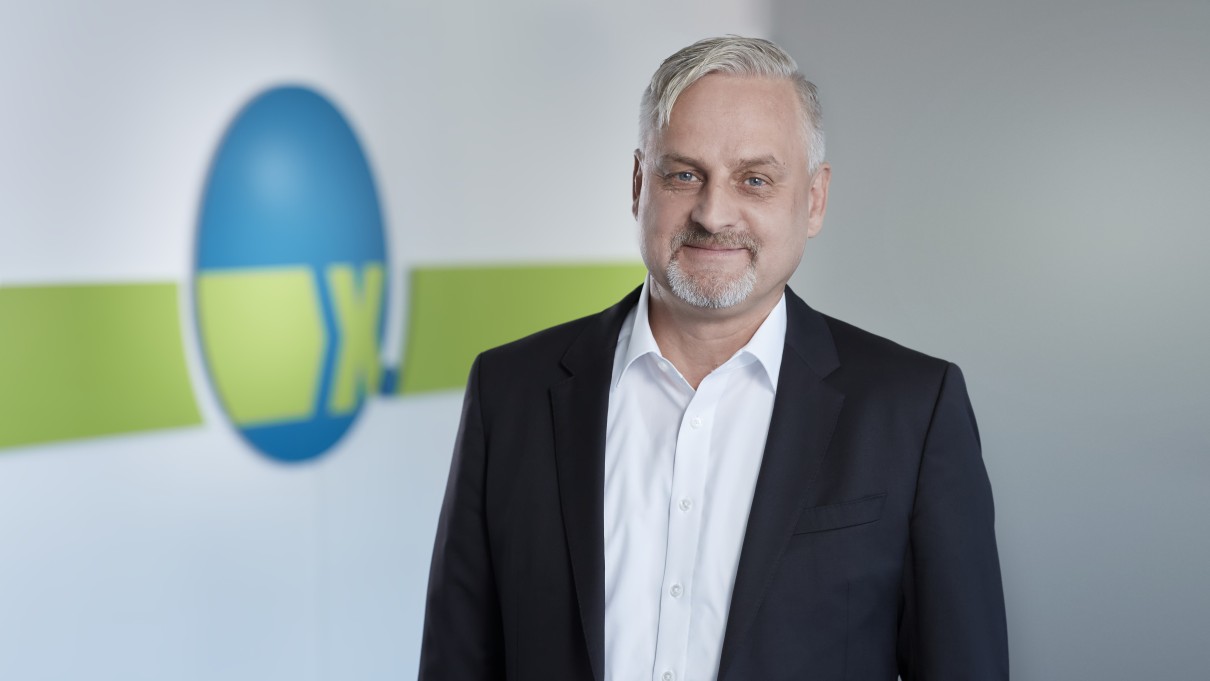Page content
How outpatient medical practices became digital beacon projects

Jens Naumann, CEO of medatixx.
At DMEA, Jens Naumann will be aiming to impress with a completely new software for outpatient psychotherapy as well as complex digital tools that genuinely assist medical practices.
medatixx is a software company specialising in products for medical and psychotherapy practices, and with its solutions for medical care centres (MVZ) also caters to customers in both outpatient and inpatient care. What will be the focus at DMEA 2023?
Clearly our new software for outpatient psychotherapy, known as psyx. It has been on the market since January and already the feedback has been very positive. Until now not much attention was being paid to resident psychotherapists where digitalisation was concerned, but that is changing significantly. We have a growing market here and attitudes towards digital solutions are very positive now, provided the solutions are well made.
What makes the new psyx software special?
With psyx we have put the experience gained with our latest medatixx software to good use. psyx is a modern software product through and through based on medatixx software. We have removed the components not relevant to psychotherapy and have added everything that this customer group requires. Users reap all the benefits that all other medatixx customers have: sensitive data can remain secure on premise in a medical practice while at the same time a complex hybrid architecture gives access to catalogues of all kinds of non-personalised data as well as services from the cloud. This makes automatic remote software updating possible, so customers no longer need to worry about iniating update routines themselves. The maintenance and support required is minimal.
As well as psyx, all your other IT solutions have to be ready now to network and handle the ePrescription, medical report and electronic sick note. Theoretically it is all ready to go, but have medical practices taken it on board?
It has taken a while, but in the meantime things have turned out quite positive. We are receiving an increasing number of enquiries, not just for the now mandatory electronic sick note, but also for ePrescription and electronic medical report functions. Particulary the electronic medical report, something we have been talking about for years, has received a boost, one reason being that every medical practice has had to install secure ’communication in the medical system’ services. With that, a communications channel for reaching other practices now actually exists. Even what was admittedly up to now only a semi-digital ePrescription is gradually gaining acceptance. We welcome that, and it is a good way to prepare for the mandatory 2024 implementation of the ePrescription as envisioned by the Federal Ministry of Health’s digitalisation strategy.
Speaking of politics, currently the Federal Ministry of Health is again working on new laws concerning digital matters which will surely be the subject of intense debate at DMEA. What are your expectations?
We would like to know what is going on with the electronic patient file – or how it is going to be rebooted. But above all we need sensible governance structures for a digitalised German healthcare system. Progress has been made, but we are not over the finishing line yet. Where do the responsibilities of the National Association of Statutory Health Insurances lie? What is, and what is not the task of gematik? Currently there are all kinds of accusations going back and forth in all directions. One of the reasons is the lack of sufficient clarity in defining responsibilities. The market needs a reset as far as establishing confidence is concerned, and we hope that the laws due to be enacted will be of help in that respect. Some initial key elements can be deduced from the strategy.
At DMEA, the focus has traditionally been mainly on hospitals, of which medatixx with its solutions for medical care centres is to some degree part. What can we look forward to in that respect at DMEA?
Once again, attractive solutions and fascinating discussions. With the introduction of our medical care centre solution x.vianova there has also been great demand for our supporting tools such as online appointment scheduling and digital archiving. Naturally, we will be showcasing these at DMEA. We also hope to have a dialogue with users about what they expect from the TI Messenger. The telematics infrastructure messenger (TIM) is an application which medical professionals can use to communicate with each other and, in the future, with patients, in a way similar to WhatsApp. This is particularly attractive for medical care centres. Naturally, an application of this kind cannot be allowed to become a universal chatting tool for demanding immediate answers to unrealistic requests. However, we see it as having great potential for communications specifically between medical practices and patients about lab results, medication plans and prescriptions – and we look forward to a dialogue at the trade show.


